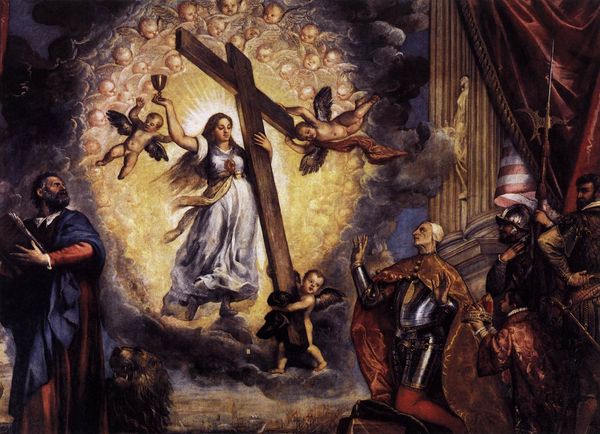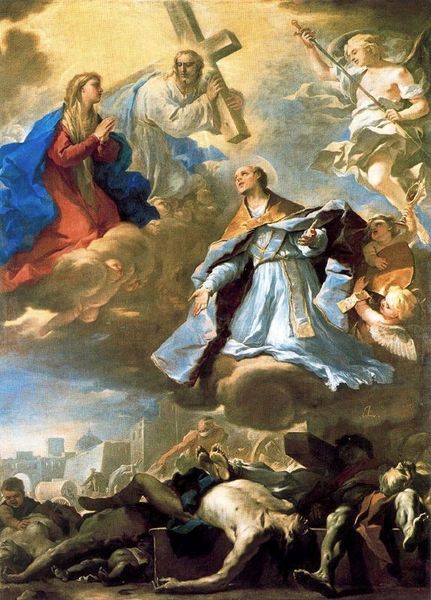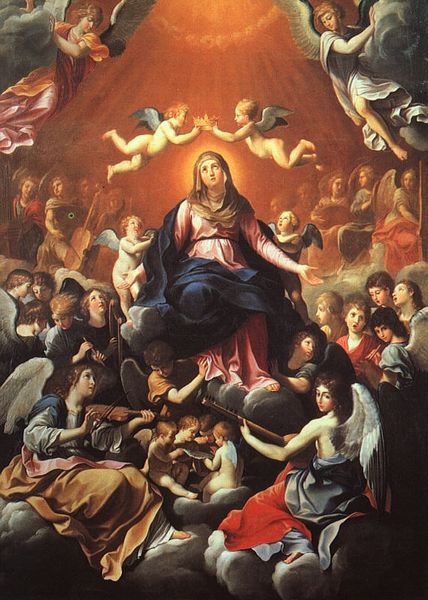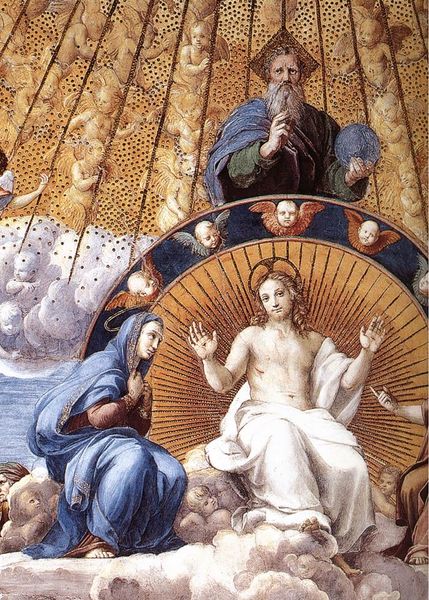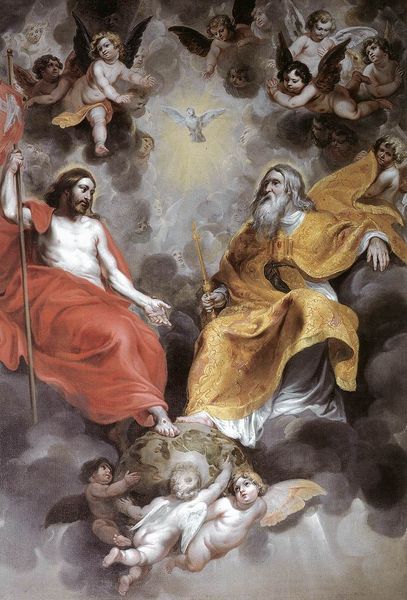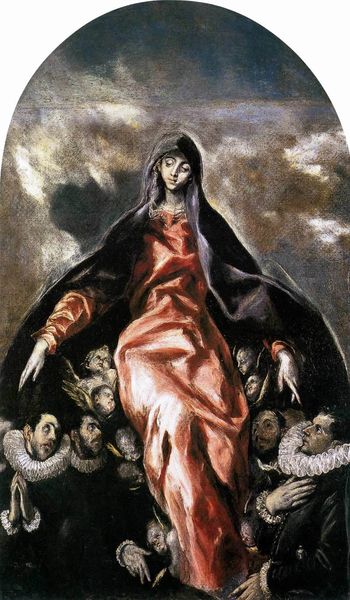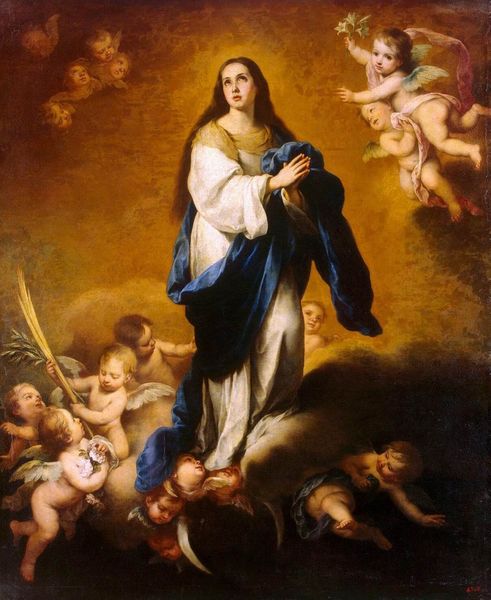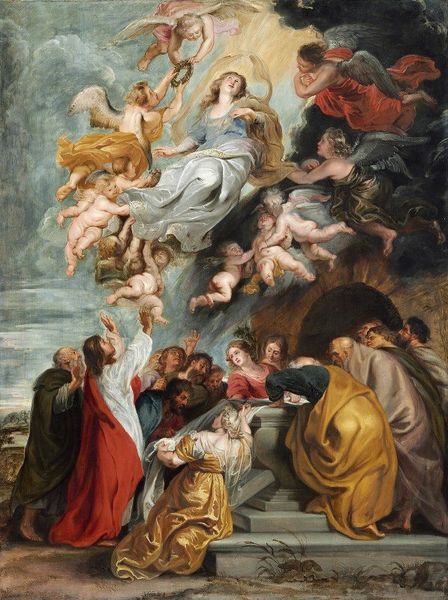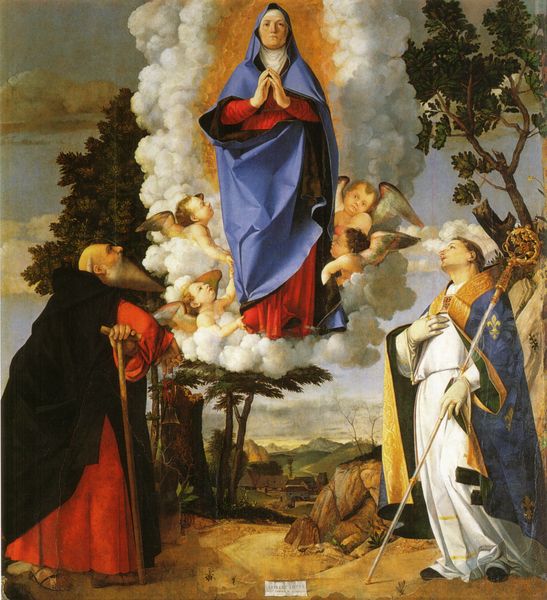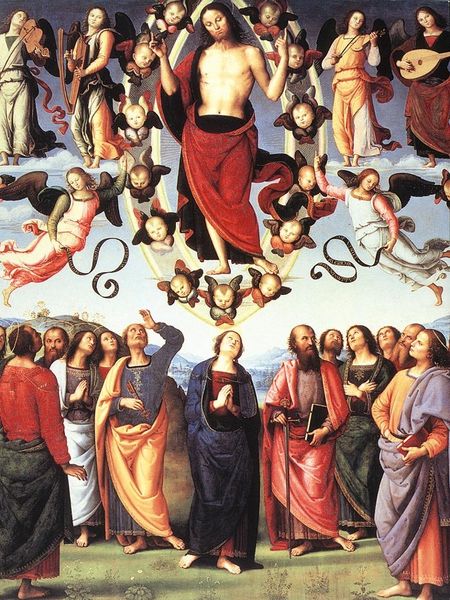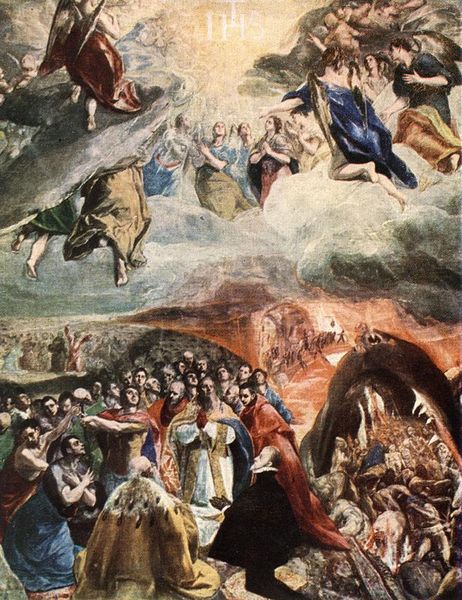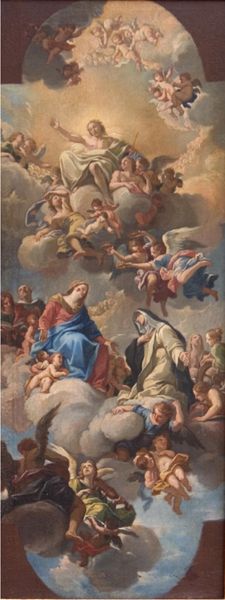
#
prophet
#
possibly oil pastel
#
oil painting
#
jesus-christ
#
portrait reference
#
acrylic on canvas
#
animal portrait
#
arch
#
surrealism
#
christianity
#
mythology
#
facial portrait
#
portrait art
#
virgin-mary
#
fine art portrait
#
angel
#
christ
#
digital portrait
Dimensions: 105 x 80 cm
Copyright: Public domain
Editor: Here we have El Greco's “Coronation of the Virgin,” dating back to 1591. It currently resides in the Santa Cruz Museum in Toledo. The artwork seems to overflow with emotion. What is your immediate impression of the formal qualities in the painting? Curator: The first element that captures my attention is the stark dichotomy of space. Notice how El Greco sharply divides the canvas into two distinct realms: an earthly gathering below and a divine sphere above. This duality is not merely representational but compositional. Editor: It does create a visual hierarchy. Below, we have earthbound mortals. Who are those figures looking upward, longing, towards the Virgin Mary in the upper register? Curator: Precisely, it directs our gaze upwards. Those earthly figures, likely saints and prophets, are depicted with dynamic, elongated forms characteristic of El Greco's style. But more than just observation, there is longing. They observe what to them must remain divine mystery. And then we look above at the coronation itself, staged with such radiant energy. The ethereal glow emphasizes a celestial coronation. Editor: Yes, the artist captures a particular visual motif, with Christ and God the Father jointly crowning Mary, symbolizing her divine status as Queen of Heaven. The crown is important, historically and psychologically: It signifies authority, sanctified royalty, and is often loaded with political, social, and spiritual weight. Curator: The dynamism is amplified by the almost frenetic brushwork and the contrast between the warm hues of the robes below and the cool tones surrounding the Virgin Mary above. But the composition itself, a swirl of upward momentum, gives life to otherwise still characters. What strikes me most is how it is organized on the canvas as if on nested fields, pushing our gaze toward an ecstatic focal point at the very top. Editor: An apt assessment. The iconographic language here reflects deep-seated cultural beliefs of the period. Think of the religious devotion of Spain during the Counter-Reformation—and the power and influence of such symbolic depictions! Curator: Indeed. By visually dissecting this canvas, by tracing the choreography of forms and the play of colors, we appreciate how El Greco constructed more than a depiction, but also an experience of transcendental significance, both spiritual and material. The power lies not only in the subject matter, but in the treatment of its structural qualities.
Comments
No comments
Be the first to comment and join the conversation on the ultimate creative platform.
